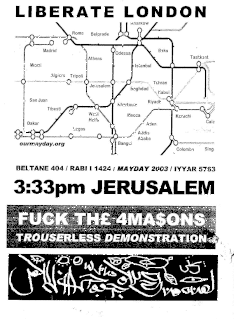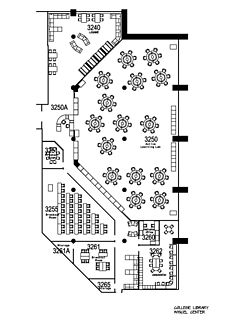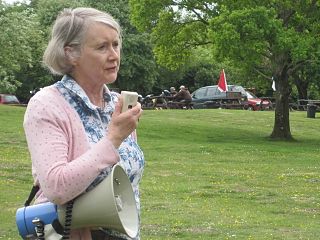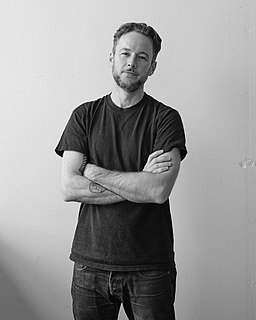Related Research Articles

A city is a large human settlement. It can be defined as a permanent and densely settled place with administratively defined boundaries whose members work primarily on non-agricultural tasks. Cities generally have extensive systems for housing, transportation, sanitation, utilities, land use, production of goods, and communication. Their density facilitates interaction between people, government organisations and businesses, sometimes benefiting different parties in the process, such as improving efficiency of goods and service distribution.

In visual arts, music, and other media, minimalism is an art movement that began in post–World War II Western art, most strongly with American visual arts in the 1960s and early 1970s. Prominent artists associated with minimalism include Donald Judd, Agnes Martin, Dan Flavin, Carl Andre, Robert Morris, Anne Truitt, and Frank Stella. The movement is often interpreted as a reaction against abstract expressionism and modernism; it anticipated contemporary postminimal art practices, which extend or reflect on minimalism's original objectives.

Psychogeography is the exploration of urban environments that emphasizes interpersonal connections to places and arbitrary routes, and follows a loosely defined urban practice known as the dérive. It was developed by members of the Letterist International and Situationist International, which were revolutionary groups influenced by Marxist and anarchist theory as well as the attitudes and methods of Dadaists and Surrealists. In 1955, Guy Debord defined psychogeography as "the study of the precise laws and specific effects of the geographical environment, consciously organized or not, on the emotions and behavior of individuals." As a practice and theory, psychogeography has influenced a broad set of cultural actors, including artists, activists and academics.
Splatterpunk is a movement within horror fiction originating in the 1980s, distinguished by its graphic, often gory, depiction of violence, countercultural alignment and "hyperintensive horror with no limits." The term was coined in 1986 by David J. Schow at the Twelfth World Fantasy Convention in Providence, Rhode Island. Splatterpunk is regarded as a revolt against the "traditional, meekly suggestive horror story". Splatterpunk has been defined as a "literary genre characterised by graphically described scenes of an extremely gory nature."
Urban sprawl is defined as "the spreading of urban developments on undeveloped land near a city." Urban sprawl has been described as the unrestricted growth in many urban areas of housing, commercial development, and roads over large expanses of land, with little concern for urban planning. In addition to describing a special form of urbanization, the term also relates to the social and environmental consequences associated with this development. Medieval suburbs suffered from loss of protection of city walls, before the advent of industrial warfare. Modern disadvantages and costs include increased travel time, transport costs, pollution, and destruction of the countryside. The cost of building urban infrastructure for new developments is hardly ever recouped through property taxes, amounting to a subsidy for the developers and new residents at the expense of existing property taxpayers.
Richard Thomas Mabey is a writer and broadcaster, chiefly on the relations between nature and culture.
The T. S. Eliot Prize for Poetry is a prize that was, for many years, awarded by the Poetry Book Society (UK) to "the best collection of new verse in English first published in the UK or the Republic of Ireland" in any particular year. The Prize was inaugurated in 1993 in celebration of the Poetry Book Society's 40th birthday and in honour of its founding poet, T. S. Eliot. Since its inception, the prize money was donated by Eliot's widow, Mrs Valerie Eliot and more recently it has been given by the T S Eliot Estate. The T S Eliot Foundation took over the running of the T S Eliot Prize in 2016, appointing Chris Holifield, formerly director of the Poetry Book Society as its new director, when the former Poetry Book Society charity had to be wound up, with its book club and company name taken over by book sales agency Inpress Ltd in Newcastle. At present, the prize money is £20,000, with each of nine runners-up receiving £1500 each, making it the United Kingdom's most valuable annual poetry competition. The Prize has been called "the most coveted award in poetry".
Topophilia is a strong sense of place, which often becomes mixed with the sense of cultural identity among certain people and a love of certain aspects of such a place.

Wayfinding encompasses all of the ways in which people orient themselves in physical space and navigate from place to place.

The garden city movement was a 20th century urban planning movement promoting satellite communities surrounding the central city and separated with greenbelts. These Garden Cities would contain proportionate areas of residences, industry, and agriculture. Ebenezer Howard first posited the idea in 1898 as a way to capture the primary benefits of the countryside and the city while avoiding the disadvantages presented by both. In the early 20th century, Letchworth, Brentham Garden Suburb and Welwyn Garden City were built in or near London according to Howard's concept and many other garden cities inspired by his model have since been built all over the world.

Blood and soil is a nationalist slogan expressing Nazi Germany's ideal of a racially defined national body ("blood") united with a settlement area ("soil"). By it, rural and farm life forms are idealized as a counterweight to urban ones. It is tied to the contemporaneous German concept of Lebensraum, the belief that the German people were to expand into Eastern Europe, conquering and displacing the native Slavic and Baltic population via Generalplan Ost.

In urban planning and design, an urban village is an urban development typically characterized by medium-density housing, mixed use zoning, good public transit and an emphasis on pedestrianization and public space. Contemporary urban village ideas are closely related to New Urbanism and smart growth ideas initiated in the United States.

Arram railway station serves the small village of Arram in the East Riding of Yorkshire, England. It is located on the Yorkshire Coast Line and is operated by Northern who provide all passenger train services. It is mentioned in the song "Slow Train" by Flanders and Swann.
The Mays Literary Anthology is an annual anthology of new writing by students from the University of Oxford and the University of Cambridge.
Michael Symmons Roberts FRSL is a British poet.
Paul Farley, FRSL is a British poet, writer and broadcaster.

Armley Moor railway station was a station on the former Great Northern Railway between Leeds and Bramley. The location was between Carr Crofts and Wortley Road bridges, accessed via Station Road.
Even before the Norman Conquest, there was a strong tradition of landholding in Anglo-Saxon law. When William the Conqueror asserted sovereignty over England in 1066, he confiscated the property of the recalcitrant English landowners. Over the next dozen years, he granted land to his lords and to the dispossessed Englishmen, or affirmed their existing land holdings, in exchange for fealty and promises of military and other services. At the time of the Domesday Book, all land in England was held by someone, and from that time there has been no allodial land in England. In order to legitimise the notion of the Crown's paramount lordship, a legal fiction—that all land titles were held by the King's subjects as a result of a royal grant—was adopted.

Marion Shoard is a British writer and campaigner. She is best known for her work concerning access to the countryside and land use conflicts. In 2002 she became the first person to give a name to the "edgelands" between town and country. Since 2004 she has also written and campaigned about older people's issues.

Robin Friend is a British-Australian photographer. His book Bastard Countryside (2018), brought together "15 years worth of exploration" the British Landscape with a large format view camera. Included in this publication by Loose Joints is an essay the landscape writer Robert Macfarlane.
References
- ↑ Walker, Andrew (14 June 2002). Aspects of Lincoln: Discovering Local History. Wharncliffe Books. p. 134. ISBN 978-1903425046.
THE TERM 'EDGE-LAND' has been coined recently for the concept of a neglected area on the fringe of a city.
- ↑ Macfarlane, Robert (2011-02-19). "Edgelands by Paul Farley and Michael Symmons Roberts - review". the Guardian. Retrieved 2021-12-10.
- ↑ Farley, Paul; Roberts, Michael Symmons (17 February 2011). "Our beautiful 'edgelands': A dark light on the edge of town". The Independent .
- ↑ Macfarlane, Robert (5 March 2015). Landmarks. Penguin. p. 231. ISBN 978-0241967874.